310th Field Artillery 'George W. B.' Named Combat Map of 'Paris-Remis' France





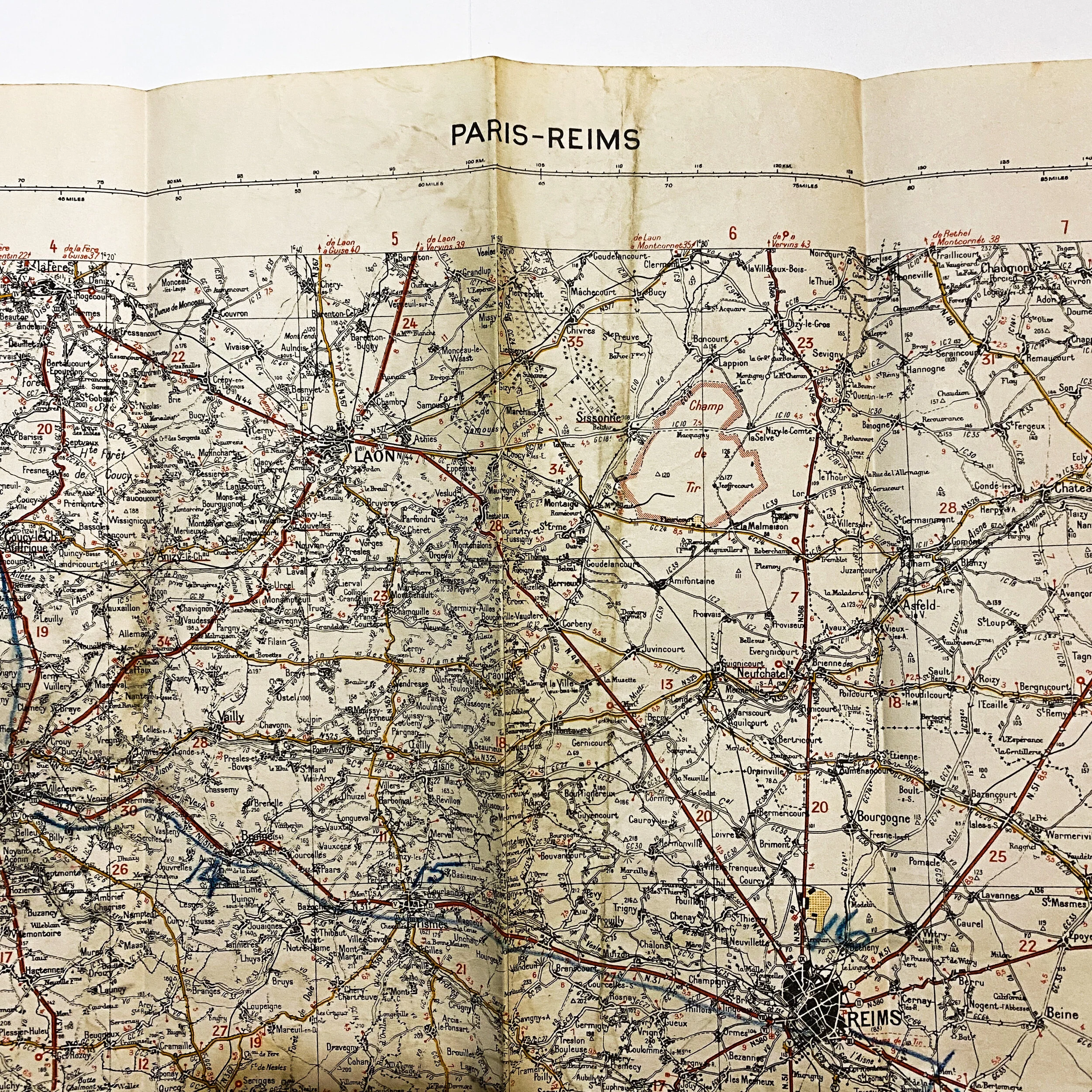






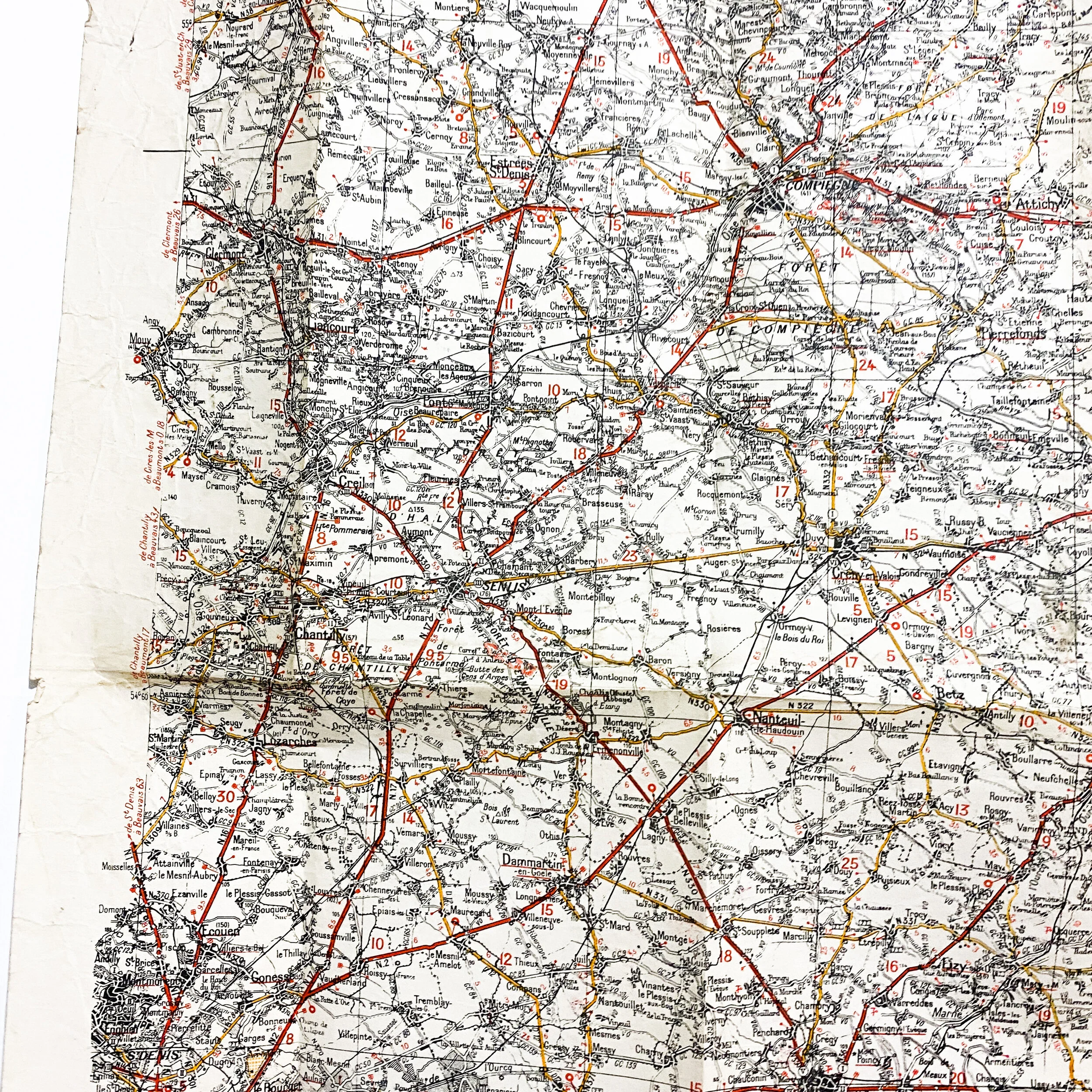
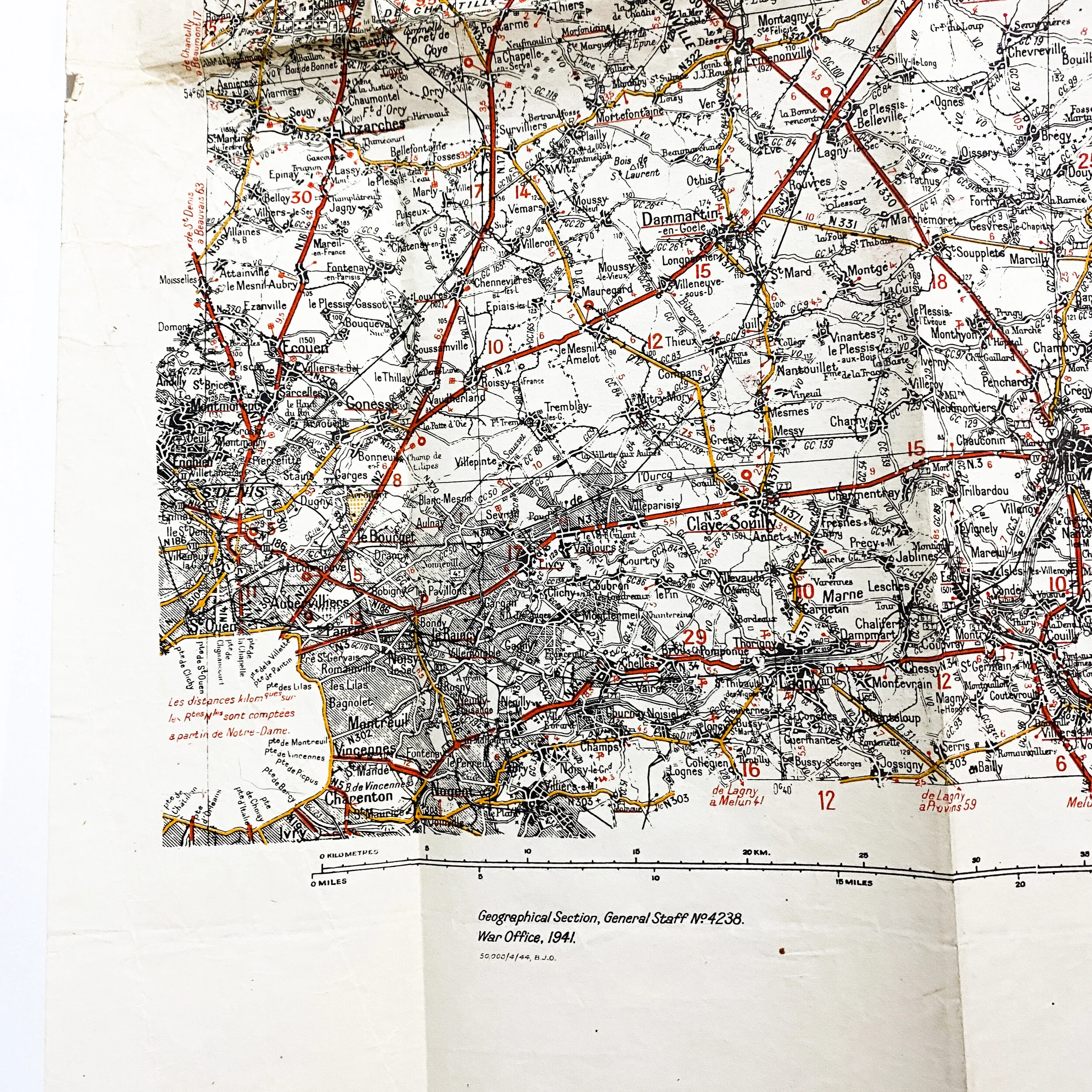

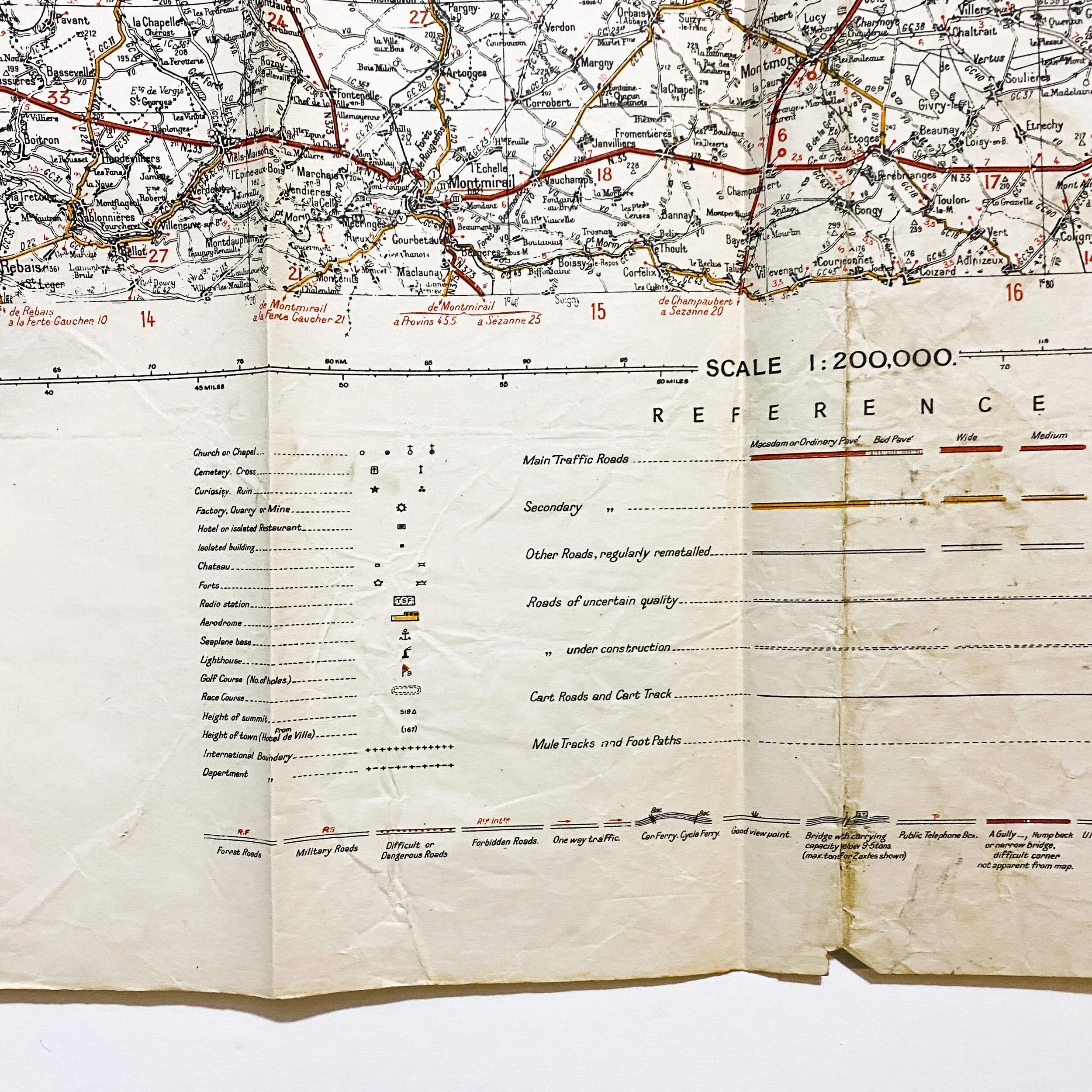
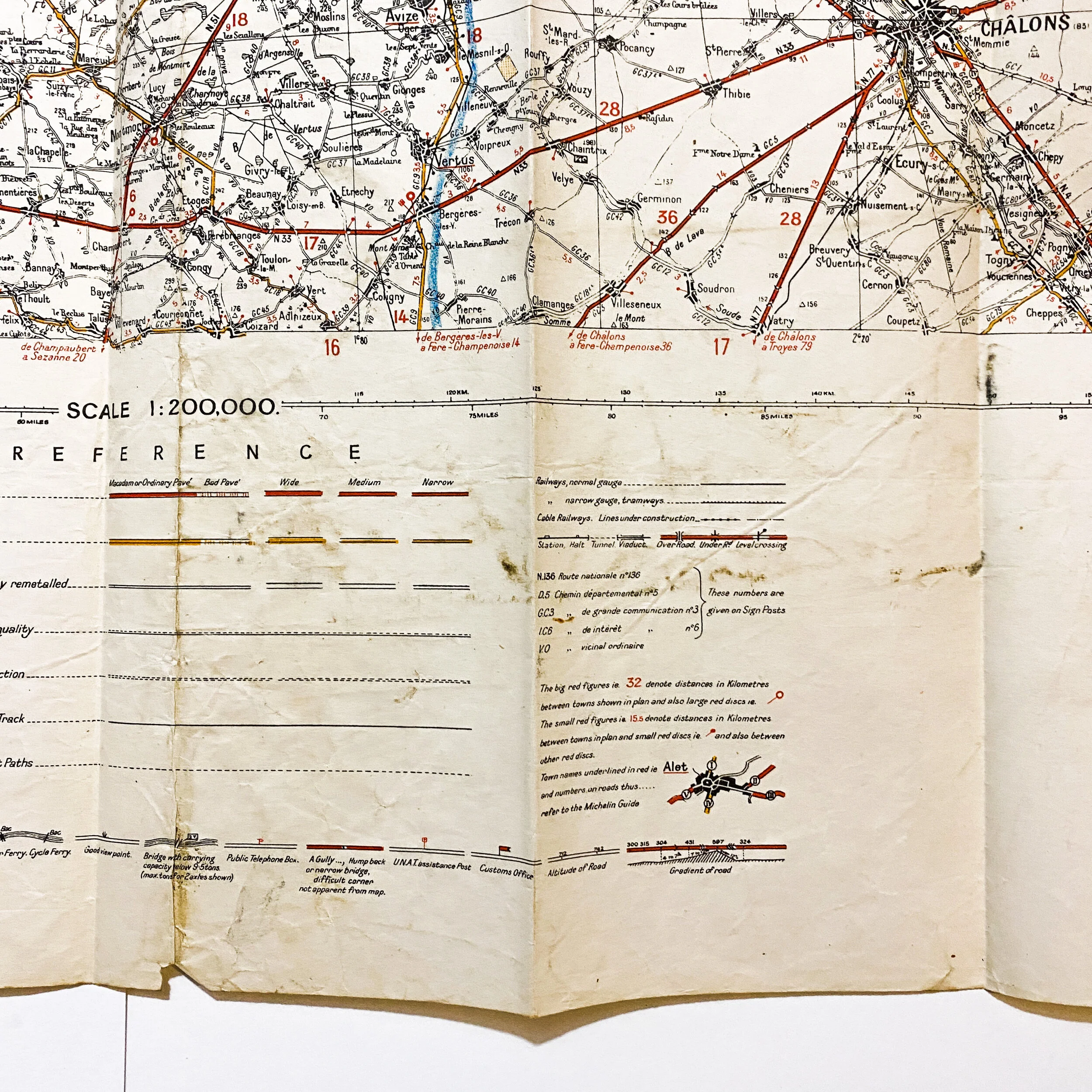






310th Field Artillery 'George W. B.' Named Combat Map of 'Paris-Remis' France
Geographical Section, General Staff, No. 4238 Published by the War Office 1941, 1st Edition. This is an extremely rare full color single side linen paper map of ‘Paris-Remis’ France. This map is printed on a folded linen paper and would have been issued to an infantry soldier. This map is very large combat map measuring 27 inches tall x 44 inches wide and in very sturdy condition. This map is marked as being contracted using air photographs using French triangulation. This map is labeled with the unit of the soldier ‘310th FA BN History’ at the top right and contains annotated marking and paths towards towns near Paris, France as the Allies began to move across and liberate France from German occupation. The map also contains marking in the map key of the maps the soldier was carrying in his map pack..with sheet numbers 54, 51, 59, 60, 55, 64, 61, and 56 being marked.
This map comes from a collection of 5 WWII combat maps brought back following the war by a soldier names ‘George W. B.’ of the 310th Field Artillery Battalion of the 79th Infantry. The 79th infantry is one of the most honored divisions of WWII as the 79th Infantry Division landed on Utah Beach, Normandy, 12–14 June and entered combat 19 June 1944, with an attack on the high ground west and northwest of Valognes and high ground south of Cherbourg.
79th Infantry Division:
The division arrived in Liverpool on 17 April and began training in amphibious operations. After training in the United Kingdom from 17 April 1944, the 79th Infantry Division landed on Utah Beach, Normandy, 12–14 June and entered combat 19 June 1944, with an attack on the high ground west and northwest of Valognes and high ground south of Cherbourg. The division took Fort du Roule after a heavy engagement and entered Cherbourg, 25 June. It was around this time that Corporal John D. Kelly and First Lieutenant Carlos C. Ogden, both of the 314th Infantry Regiment, were awarded the Medal of Honor. It held a defensive line at the Ollonde River until 2 July 1944 and then returned to the offensive, taking La Haye du Puits in house-to-house fighting, 8 July. On 26 July, the 79th attacked across the Ay River, took Lessay, crossed the Sarthe River and entered Le Mans, 8 August, meeting only light resistance. The advance continued across the Seine, 19 August. Heavy German counterattacks were repelled, 22–27 August, and the division reached the Therain River, 31 August. Moving swiftly to the Franco-Belgian frontier near St. Amand (east of Lille), the division was then moved to XV Corps in eastern France, where it encountered heavy resistance in taking Charmes in street fighting, 12 September. The 79th cut across the Moselle and Meurthe Rivers, 13–23 September, cleared the Forêt de Parroy in a severe engagement, 28 September–9 October, and attacked to gain high ground east of Emberménil, 14–23 October, when it was relieved, 24 October.
After rest and training at Lunéville, the division returned to combat with an attack from the MignevineMontiguy area, 13 November 1944, which carried it across the Vezouse and Moder Rivers, 18 November–10 December, through Haguenau in spite of determined enemy resistance, and into the Siegfried Line, 17–20 December. The division held a defensive line along the Lauter River, at Wissembourg from 20 December 1944 until 2 January 1945, when it withdrew to Maginot Line defenses. The German attempt to establish a bridgehead west of the Rhine at Gambsheim resulted in furious fighting. The 79th beat off German attacks at Hatten and Rittershoffen in an 11-day battle before withdrawing to new defensive positions south of Haguenau on the Moder River, 19 January 1945. The division remained on the defensive along the Moder until 6 February 1945. During February and March 1945, the division mopped up German resistance, returned to offensive combat, 24 March 1945, crossed the Rhine, drove across the Rhine-Herne Canal, 7 April, secured the north bank of the Ruhr and took part in clearing the Ruhr Pocket until 13 April. The division then went on occupation duty, in the Dortmund, Sudetenland, and Bavarian areas successively, until its return to the United States and inactivation.